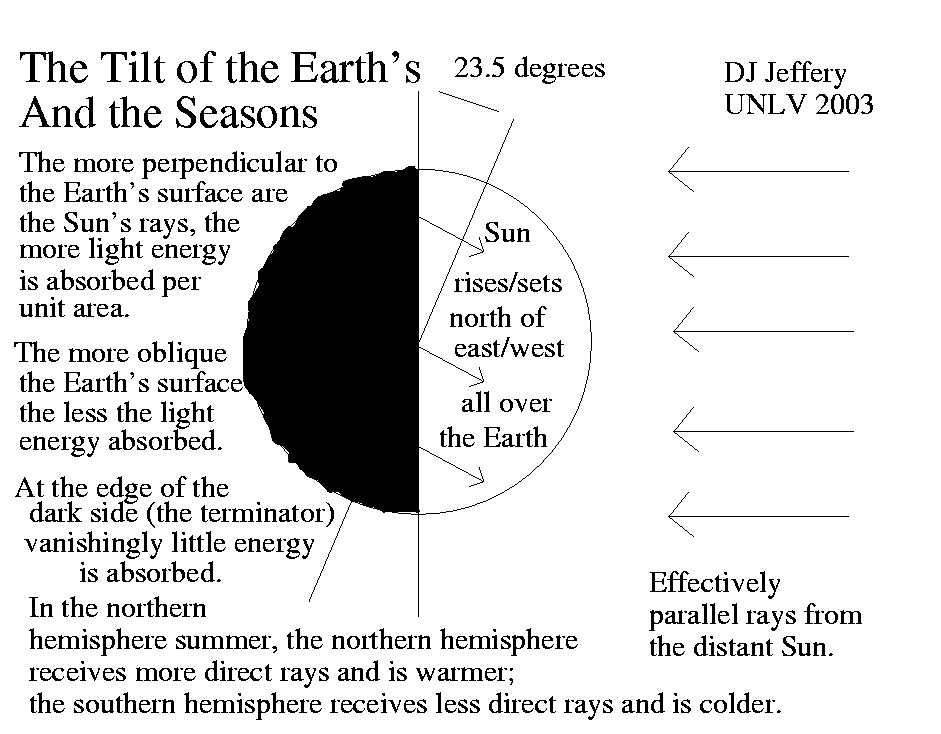
Caption: The heating effect of the Sun in the Northern Hemisphere summer.
The diagram shows the summer solstice for the Northern Hemisphere.
The diagram also shows why a general point on the equator has nearly exactly 12 hours of daytime and 12 hours of nighttime.
Both equator and terminator (the "line" between daytime and nighttime) are great circles on the Earth and the equator intersects the terminator twice. A general point on the equator always takes almost exactly 12 to rotate (because of the Earth's rotation) from one of these terminator points to the other, and so has almost exactly 12 hours of daytime and 12 hours of nighttime.
Why "almost exactly". There are small variations in the Earth's rotation rate relative to the Sun due to various subtle effects (see Wikipedia: Day: Apparent and mean solar day).
The equator must a rather boring place in a sense since there is always almost exactly 12 hours of daytime and 12 hours of nighttime. But on the other hand, you could live in the Galapogos Islands amid all the primordial splendor and isolation.
Credit/Permission: ©
David Jeffery,
2003 / Own work.
Image link: Itself.
Local file: local link: season_003_summer.html.html.
File: Earth file:
season_003_summer.html.html.